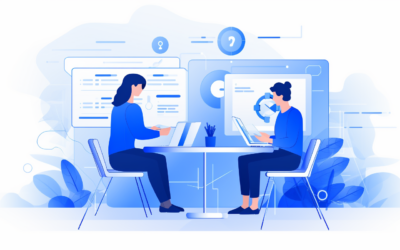A chatbot is a program that responds automatically and in real time to messages from users, simulating human-like interaction. Chatbots are commonly used in customer service, sales, marketing, and social networking. This technology uses artificial intelligence (AI) and natural language processing (NLP) to enable dialog with customers and address their concerns.
How chatbots work
Chatbots are designed to analyze natural language and respond accordingly. They use algorithms and pattern recognition to understand a user's request and select appropriate responses or actions. In general, there are two types of chatbots:
- Rule-based chatbots: They use predefined rules to handle requests. Interactions are usually simple and limited, as the bot can only respond to certain keywords and phrases.
- AI-powered chatbots: These chatbots use advanced algorithms, machine learning, and NLP to understand complex and nuanced queries. They can learn and adapt to previous interactions and user requests to provide more contextual and accurate responses.
Advantages of chatbots
Chatbots offer several benefits to businesses and users, such as:
- Time and cost savings: Chatbots reduce the need for human employees in certain customer service areas, resulting in cost savings. They are able to serve multiple customers simultaneously, minimizing waiting times.
- Availability: Chatbots are available around the clock to answer user queries. This means that they can also be helpful outside business hours.
- Consistency: Unlike human agents, chatbots are consistent in their responses and always provide the same quality of service, regardless of workload or emotion.
- Automation: Chatbots can perform simple, repetitive tasks, freeing up human labor for more complex and demanding requirements.
Application examples for chatbots
Chatbots can be used in a variety of areas, e.g.:
- Customer service: answering frequently asked questions, handling complaints, forwarding inquiries to responsible departments.
- Sales: product recommendations based on customer preferences, closing orders, upselling and cross-selling.
- Marketing: promotion of events, products or offers, and collection of user data for targeted campaigns.
- Internal communication: helping employees find information, organize meetings, or submit out-of-office requests.



